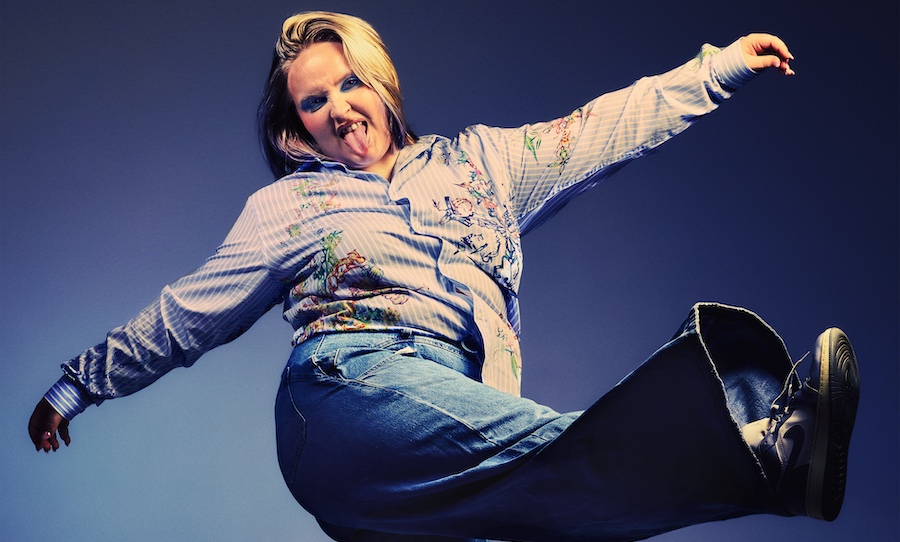He gets his tools from a fruit and veg shop, can recite random ads from the TV and also creates some of the most unique art you’ll ever see.
Canberra based artist Jacob Potter challenges himself through his artwork, constantly striving to push boundaries. Unlike the traditional artist, he doesn’t just use a paintbrush and canvas, he uses many different, even unconventional, materials, and the result is both unique and formidable.

When does a painting become a sculpture? Tear down artistic definitions with the shifting, material artwork of Jacob Potter.
HAPPY: Would you like to tell us a little bit about yourself?
JACOB: I’m a visual artist living in Canberra. I create work using all sorts of materials, and weave them in unconventionally into paintings, objects and things. That’s the most interesting part about me, other than my ability to remember and recite random ads from the television. Word for word.
HAPPY: You seem to use the colour red in nearly all of your artworks. Is this on purpose, or would you say you just like the colour?
JACOB: Yeah, I do like the colour red. It has associations with powerful emotions like rage and love, and I find it very visually dramatic. It plays an important role in the scenery of my paintings.

HAPPY: Your work has a big visual influence, such as 3D effects. Do you prefer to combine these forms for every one of your artworks?
JACOB: I always use materials other than paint in my works, some may not be as obvious as others — I like to think my works are paintings wanting to be sculptures. There is always a stretcher bar involved, and some sort of fabric material and paint, so I guess in a traditional sense it’s painting, even though the way they are assembled and the outcome may not look like painting.
HAPPY: Is there a message you try to bring across with your work?
JACOB: My work challenges the constructs of traditional painting practice. I like to push the boundaries of what makes a painting a painting. At what point does painting become sculpture? Do paintings have to look nice? Do you have to have some technical skill involved with what you’re doing? Every time I make something I ask more questions, though sometimes I feel like I never really get the answers.
HAPPY: Do you plan your next piece and the material you’re going to use in advance, or is it more spontaneous?
JACOB: All of the materials I have used at some stage are things I have found either at home or at my work places; the fruit and veg shop and a framing store. I am drawn to unwanted things and things that have been rejected. I take the stuff nobody wants anymore, adopt them and give them a new purpose. I particularly like materials that have interesting textures or colours, as they add another dimension to my work.
HAPPY: Who are your major influences?
JACOB: I have always loved the work of artists like Dale Frank, Jean-Michel Basquiat and Vivienne Binns, and more recently I have been interested in Mike Kelley, Tory Thornton, and Brian Belott. I draw a lot of inspiration from music, especially bands like Sonic Youth, The UV Race, Pavement, and Ween. The textures, layers and themes of the music is reflected in the way I create my work.

HAPPY: Do you feel constant inspiration to pursue your craft, or do you sometimes have a mental block? If so, what then inspires you to go back to work?
JACOB: I struggle with anxiety inhibiting my ability to make my work; when I work alone in the studio I often find myself questioning whether or not my work is any good. Sometimes it can be crippling, but I have found that not creating anything makes it worse in the long run, so I push myself to actively make something. Often making without having an outcome in mind helps break that creative drought and can bring on the inspiration.
HAPPY: How does it feel to know that your art is being appreciated?
JACOB: I’m so grateful for all the opportunities I’ve had since leaving art school a couple of years ago, however I have found that the recent cuts to arts funding has lessened the opportunities for emerging artists to drive their practices forward. It’s unfortunate that we are in a period where the arts are not being supported and appreciated as they should be.

HAPPY: What have you got planned for 2017?
JACOB: I’m keeping my head down in the studio at the moment and keeping it quiet on the exhibition front. I find I work best when I don’t have the pressure of making for particular show, and I am keen to push the boundaries of my work while I have the chance to. I will let you know via Instagram if anything pops up.



